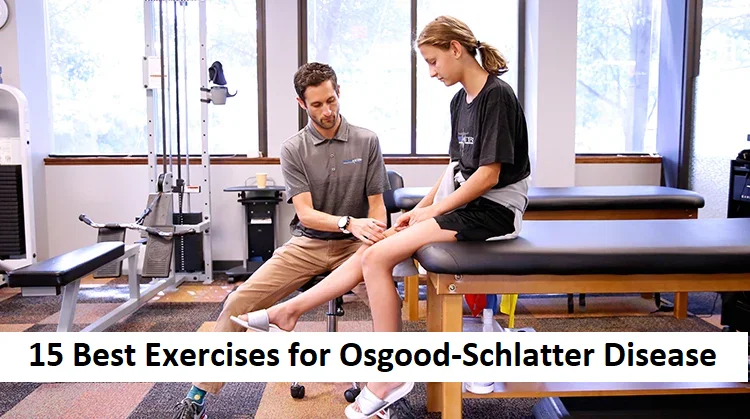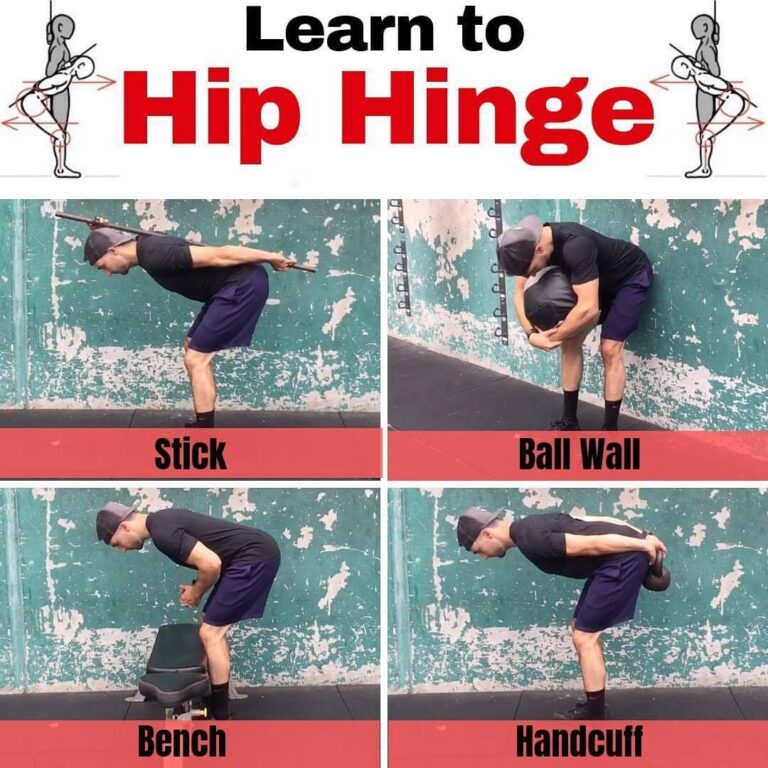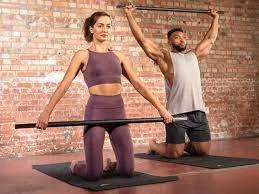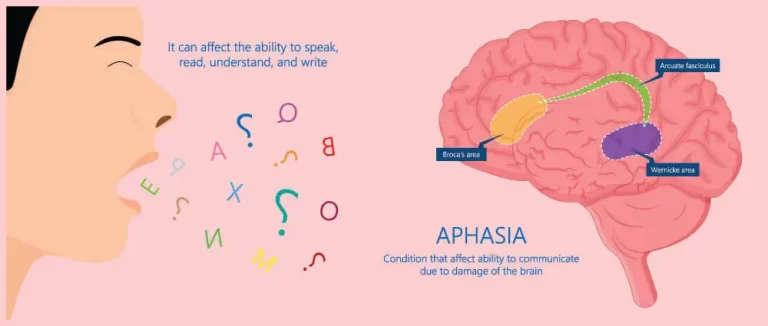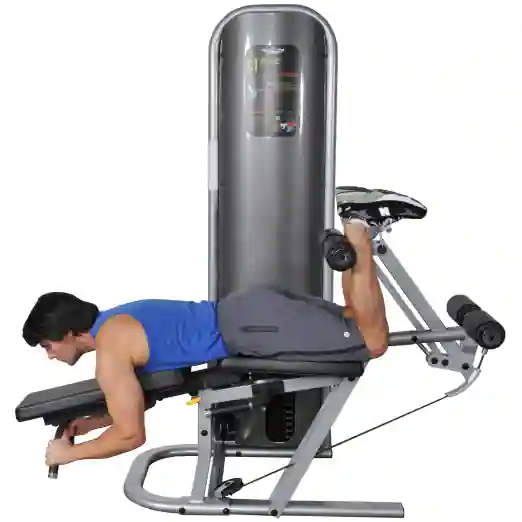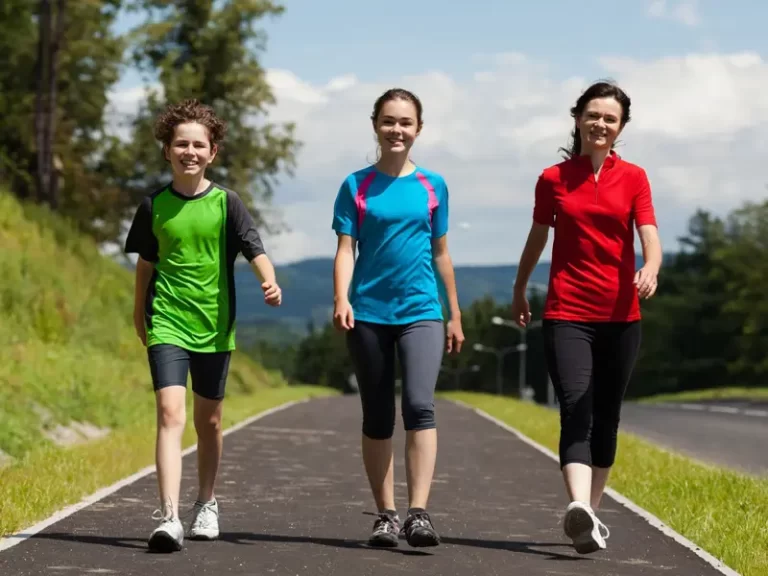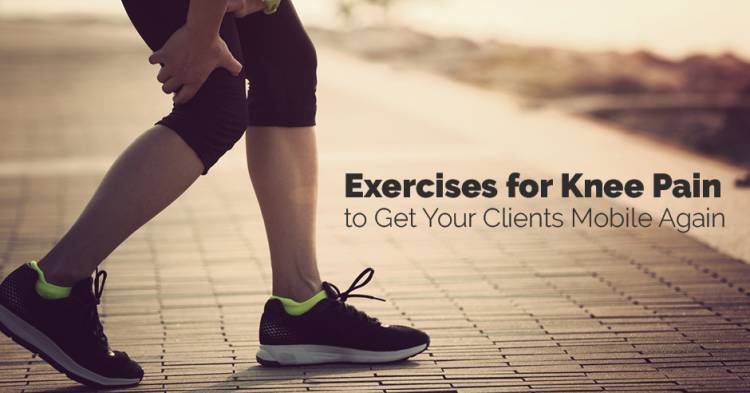15 Best Exercises for Osgood-Schlatter Disease
Introduction:
Exercise for Osgood-Schlatter disease is an important part of your overall treatment plan, that Helps to strengthen your weak muscles and also improve flexibility and Mobility.
Osgood-Schlatter disease is a condition that causes knee pain and swelling, particularly in young adolescents who are active in sports or activities that involve repetitive knee movements. While exercise alone cannot cure Osgood-Schlatter disease, certain exercises can help manage symptoms and promote healing.
The Osgood-Schlatter disease is a very treatable condition that physical therapy helps many peoples come back stronger and heal following rehab. for Osgood-Schlatter disease as a result. Strengthening and stabilization exercises are helpful to improve body strength.
Stretching is an important part of the management of Osgood-Schlatter disease. Exercise is a part of everyday life to stay active and healthy. exercises help you improve your flexibility, strength, and balance, and take pressure off the knee. In Osgood-Schlatter disease physiotherapy exercises session include Knee and hip exercises for your treatment part. exercises keep your muscles strong that can help reduce stress and strain to a minimum in the painful areas of your body.
Benefits of Exercises for Osgood-Schlatter disease :
If you do regular exercise, then here are the benefits,
- Pain relief in long term
- Improve flexibility of the joints.
- Reduce tension or tightness.
- Exercise may help you to restore mobility.
- Maintain or improve your posture.
- Reduce inflammation.
- Improved physical fitness.
- Exercise can help you reduce joint stiffness.
- Maintain daily functional activity.
- Improve the range of motion.
- Improving coordination.
- Improve your balance.
15 Best Exercises for Osgood-Schlatter Disease
Following are the best exercises that really helpful to You for Osgood-Schlatter disease,
Quadriceps Stretching
- Start with a relaxing standing position.
- For support use a wall or chair.
- Now bend your one leg at the knee.
- You can grasp your leg by the foot.
- Then gently pull the leg back up.
- You can feel the stretch of your quadriceps muscles.
- Hold for a few seconds.
- Then return to your neutral position.
- Then relax.
- Repeat the other side 5-10 times.
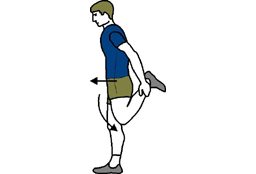
Hamstring Stretches
- Start with a relaxed supine position on the floor.
- Now loop the towel around your toes.
- You can hold the ends of the towel in your hands.
- Then slowly pull on the towel to lift your straight leg up.
- Keep your knee straight.
- The other leg should also remain flat on the floor.
- You can bring your leg up until a stretch is felt behind your thigh.
- Hold for a few seconds.
- Then return to your neutral position.
- Then relax.
- Repeat the other side 5-10 times.

Calf stretch
- Start with a relaxed seating position on the table.
- Keep your knees straight.
- You can loop a towel around the front of your foot.
- Pull your foot slightly flexed position.
- Keep your legs flat on the floor.
- You can feel the stretch of your calf muscles.
- Hold for a few seconds.
- Then return to your neutral position.
- Then relax.
- Repeat the other side 5-10 times.
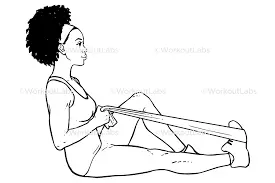
Side Walk with Band
- Start with a relaxing standing position.
- Now wrap a resistance band right above your knee or ankle.
- Then squat down and take a step to the one side.
- You can take small steps to one side and then repeat on the right side.
- Then return to your neutral position.
- Then relax.
- Repeat these 5-10 times.
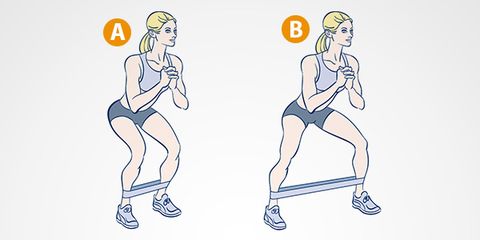
Bridge
- Start with a relaxed supine position on the table.
- Now bent your knees and feet are flats on the floor.
- Then squeeze your bottom muscles and lift your body upwards.
- Keep your arms by your side.
- Hold for a few seconds.
- Lower your body.
- Then return to your neutral position.
- Then relax.
- Repeat the other side 5-10 times
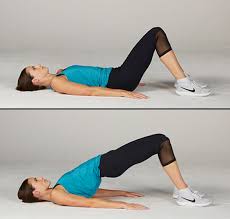
Straight Leg Raise
- Start with a relaxed supine position on the table or floor.
- Now bend your one knee.
- Then slowly lift your entire leg.
- While keeping your other knee straight.
- Then hold for a few seconds.
- Then lower your leg.
- Return to your neutral position slowly.
- Then relax.
- Repeat on the other side.
- Repeat 5-10 times on each side.

Clam
- Start with a relaxed side-lying position on the table.
- Tighten your stomach.
- Now bent your knees.
- Lift your top knee and keep your feet together.
- Hold for a few seconds.
- Then slowly lower your leg.
- Then return to your neutral position.
- Then relax.
- Repeat 5-10 times on each side.

Stepping Up
- Start with a relaxing standing position on the floor.
- Now place a single-step footstool on the floor.
- For support, you can hold on to a chair, counter, or wall while you do this exercise.
- Keep your back straight and then step up with your affected leg.
- Then put your other leg on the footstool.
- Hold for a few seconds.
- Then return to your neutral position.
- Then relax.
- Repeat 5-10 times on each side.

Prone Quadriceps Stretch
- Start with a relaxing prone position on the table.
- Now bend your knee and grasp your toes, foot, or ankle.
- You feel the stretch in your thigh.
- Keep your knees together.
- Hold this position for a few seconds.
- Then return to your neutral position.
- Then relax.
- Repeat 5-10 times on each side.
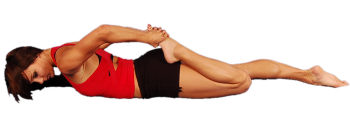
Quadriceps Short Arc
- Start with a relaxing supine position on the bed.
- Now place a rolled towel under your knee on the leg.
- Your heel should rest on the ground.
- Tighten your thigh muscle.
- Now push the back of the knee into the towel.
- Hold for a few seconds.
- Then return to your neutral position slowly.
- Then relax.
- Repeat on the other side.
- Repeat 5-10 times on each side.
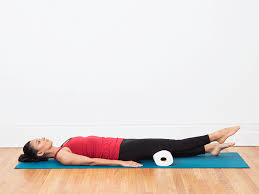
Quadriceps wall Squats
- Start standing with your feet shoulder-width apart.
- Keep your knees straight.
- Slowly bend both knees and keep equal weight on both legs,
- Minimum bend your knees 90 degrees.
- Keep your back straight.
- Hold it for a few seconds.
- Then return to your neutral position slowly.
- Repeat 5-10 times.
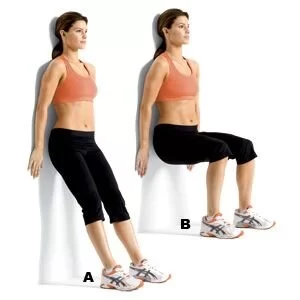
Hip Abduction
- Start with a relaxed seating position on the chair.
- Now the resistance band is placed around your knee.
- Then gently spread your both legs.
- Hold it for a few seconds.
- Then return to your neutral position slowly.
- Then relax.
- Repeat 5-10 times on each side.
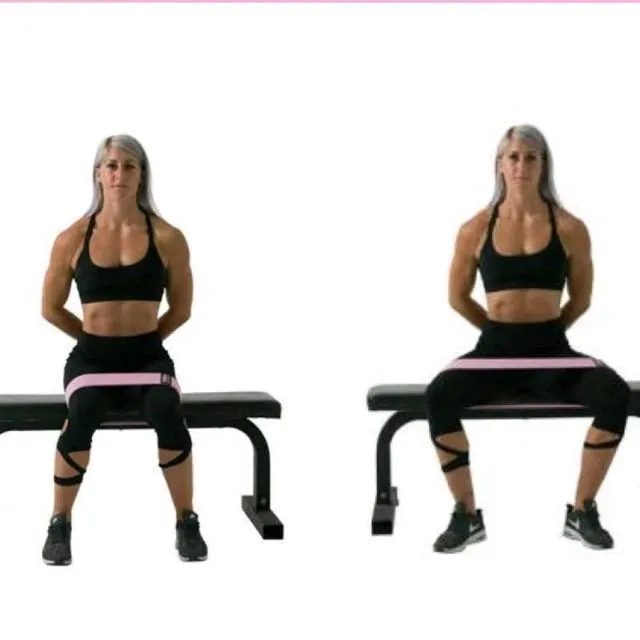
Step down
- Start with a relaxing standing position on the floor.
- You can use a box or a small table.
- Now stand one foot on a step and one foot off the ground.
- Then slowly lower the leg down off the side of the step.
- Lightly touch your heel to the floor.
- Then return to your neutral position.
- Then relax.
- Repeat 5-10 times.
Gastrocnemius Stretch
- Start with a relaxing standing position against the wall.
- Now take one step toward the wall with your right foot.
- Put your both palms on the wall.
- Bend your right knee.
- Then lean forward.
- Keep the left leg straight and the left heel on the floor.
- Hold for a few seconds.
- Then return to your neutral position.
- Then relax.
- Repeat 5-10 times
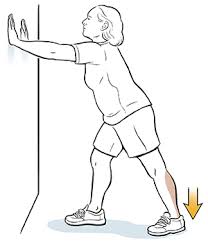
Side-lying leg lift:
- Start with a relaxed side-lying position on the table.
- Keep your both legs straight.
- Now lift your leg straight up.
- Hold for a few seconds.
- Then slowly lower your leg.
- Then return to your neutral position.
- Then relax.
- Repeat 5-10 times on each side.
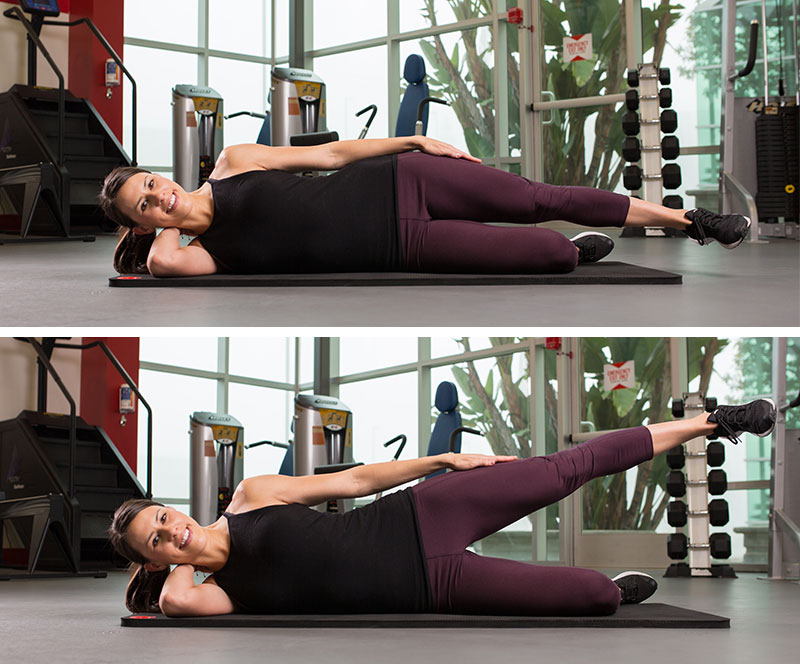
What precautions are required during exercise?
- Do maintain good posture while performing exercises.
- Take rest between exercises
- Stop exercising if you feel a sudden pain.
- Do slightly stretch and bend
When do you not exercise?
- You’re feeling sick
- severe muscle burning
- swelling or pain in joints
- fever
- headache
- If exercise is painful stop the exercise
What exercise you should avoid with osgood-schlatter Disease?
- High forces exercises
- Running
- Jumping
- Full squatting
- Stair climbing activity
- Painful Activity
- Any painful exercise you must avoid
FAQs
How do you prevent Osgood-Schlatter Disease?
To prevent Osgood-Schlatter Disease the exercise program is helpful to strengthen and stretch the muscles around your knee joint.
Exercise work on muscles and bones and makes them stronger and builds bone density.
How often should someone with osgood-schlatter Disease exercise?
Three to five days per week minimum.
If you have daily time you can continue 45 minutes every day regularly.
What are the best exercises for osgood-schlatter Disease?
Strengthening, stretching, balance, and flexibility exercise for your joints.
These include exercises like wall squats, straight leg raise, steps up, quadriceps, and hamstring stretches.
What activities make worse Osgood-schlatter Disease?
Running,
High jumping
This activity increases pressure on the muscles and joints.
Can you improve Osgood-Schlatter’s Disease with exercise?
You can improve your health with an exercise program.
Exercise strengthens bones and muscles thats an important key for Osgood-Schlatter Disease.

